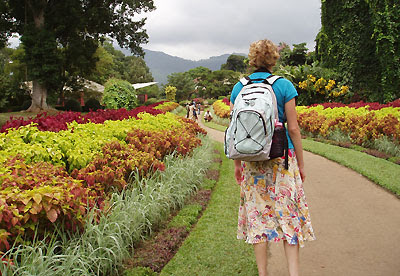Been looking for intricate handicrafts that wil bring colour to your home? The search ends at Anusha Handicrafts.
In the land of serenity. it isn't out of the ordinary to find a statue of the Buddha in a Sri Lanka home. When it comes to having one of your own either as one's way of embracing all things Buddha or just wanting to have something to remember Sri Lanka by, then one needs to look no further than Anusha Handicrafts.
Filled to the brim, with knick knacks comprosing of smiling Buddha's antiques, collections items, jewellery made of wood. steel, coral and other raw materials. it is literally impossible to walk away empty handed.
It has a large selection of beautifully carved elephants, which are one of the most pipular handicrafts items at the store Carvings are available as single elephants or up to four in a row, varying in size from two up to forty inches, and are made of mahogany, ebony, teak, nadum, coconut as well as granite, brass, silver and oxidised metals.
The hallmark of the Sri Lanka handicrafts industry, masks reflect the traditional crafts skills as well as the cultural and religious values of the local people, Historically wooden masks with vibrant colours each with a duistinct characteristic and shape, were used for creative riuals and ex orcisms. Today masks are more commonly seen in religious processions, ttheaatrical and cultural concerts, making colourful and dramatic interior decor.
The magnificence of Sri Lanka craftsmanship is clear when one studies the Buddha statues, from the serene tranquility of his facial expressions to the details of his robes, carved to perfection. The status at the store are seated in meditation pose, standing. preaching and lying positions, and are made of wood, granite, brass, oxidised metal and bone. The size varies fro three to thirty inches.

Anusha Handicrafts also have as impressive selection of oter revered dieties including gods - Kataragama, Shiva, Ganesh, Krishna,Nataraj, and goddesses Saraswathi, Pattini, Lakshmi, Parvathi, Kali amma as well as Sai Baba. Awide range of Brassware, silverware and copperware are also available with the inclusion of unity items such as bowis, candle stands, vases, oil lamps, cutlery , dinnerware, decorative curios, wall plaques, jewllery and trinket boxes. The engravings on these are exquisite, using stylish motifs depicting local flora and fauna, human ans divine figures, Some are inlaid with copper or set with precious gems handmade to the highest quality and finish.
Tapping into the country's rich history steeped in culture and tradition, the store has successfully displayed these exotic crafts, the result of master craftmanship. whose age old skills have been handed down from one generation to the next, and are preseved to date, So if you are looking for your very own masterpiece, beckoning you to its doors is a store that has no qualms in spoiling its customers for choice.











































